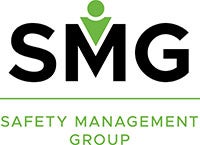Challenges
LifeSource is a leading Organ Procurement Organization (OPO) operating in Minnesota,
North Dakota, South Dakota, and western Wisconsin. The non-profit organization, which has
the second largest footprint in the nation, facilitates organ, eye, and tissue donation between
hospitals and transplant centers. Its mission is to save lives and offer hope and healing to
families whose loved ones chose to save the lives of others.
LifeSource works with grieving families through the donation process, surgically recovers
donated organs, and transports the organs to recipients. According to Chief Executive
Officer Kelly White, more than 100,000 people nationwide are waiting for a lifesaving
transplant—3,000 of which are in the nonprofit’s Upper Midwest region.
Organ and tissue recoveries are complicated, detailed, and driven by deadlines. The nonprofit
works with more than 270 hospitals, 9 transplant centers, 9 medical examiner offices, and
hundreds of funeral homes, traveling to those sites when a potential transplant situation arises.
As you can imagine, there’s a lot of paperwork involved, paperwork that’s tracked meticulously,
must be easily retrievable, and is regulated by federal authorities. For LifeSource, processing
paperwork was painful.
LifeSource was using Sage MAS 90, later named Sage 100, for its finances for years. The
nonprofit operated on aging technology housed on-premises. The organization’s limited remote
access involved trying to connect via a cranky VPN that often dropped connections leaving
employees very frustrated while trying to save lives. “We were not able to access data remotely,”
says Matt Forse, Staff Accountant. “The reporting capabilities were very limited, and the reports
that we did have were not formatted very well. The user interface was not very friendly.”
“The biggest issue was that our business had grown quite a bit and Sage 100 was no longer
able to manage what we needed it to do,” says Beth Kabba, Senior Manager of Financial
Operations, a 30-year-veteran of LifeSource. “To get a customized report took a lot of work. It
was very difficult to use our financial information to make decisions or tell our story.” “It took a
lot of labor to enter in AR or AP and it was time intensive. It got to the point of not helping us do
our work, and made it a lot harder to work,” she adds.
At LifeSource, every financial action is tracked by a patient ID, including procurement costs,
organ transport, transplants, doctor pay, and so forth. “We had to merge information, look up
items in different spreadsheets, and move information around,” Kabba says. “Nothing could
speak to each other. “Nothing was transmitted digitally; every item came in the postal mail.
“You’d have to get the mail and stamp it, most likely an invoice, with the date.”
As the years went on, the Sage system began to crawl, and if someone accidentally made a
mistake, the whole transaction needed to be re-entered, wasting time. For example, Kabba
explains, “It’s not unusual for us to get a transportation invoice once every two weeks that
might have 100 lines that represent different case. And so, you had to enter data in for each
case.” In addition, executives didn’t have access to financial reports unless she printed the
reports for them.
No Remote Access
To get any work done during the pandemic lockdown required trying to VPN into on-premises
servers, which was very difficult. They rotated who worked from the organization’s offices.
Running a financial report was challenging, requiring someone in the office to run them, save
the files, and then send them to the requestor. While providing balance sheets and income
statements was somewhat easy, obtaining deeper data and insights into donor data, was very
difficult. The organization had eight seat licenses, which meant additional users needed to ask
someone to log out or needed to schedule access.








